
views
Choosing a Healthy Spot
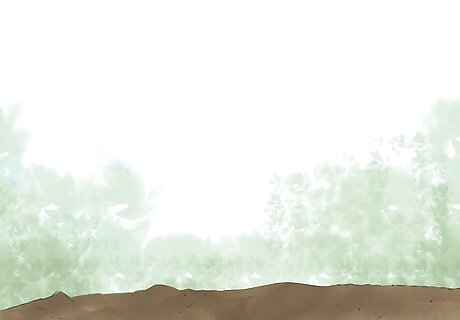
Pick a spot outside that has access to sun 5-6 hours a day. Choose a spot in your yard that gets sunny — a little bit of shade is okay. Chrysanthemums like the morning sun, so try to place them in a spot that gets sunlight in the earlier hours of the day.
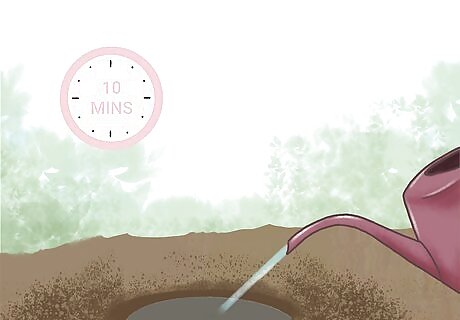
Ensure the soil is well-drained and fertile. Chrysanthemums don’t like being constantly wet, so make sure the soil is able to drain easily and that there’s plenty of air circulation. If you're unsure whether or not your soil is able to drain efficiently, dig a hole using a shovel that's roughly 1 foot (30 cm) deep. Fill the hole with water and see if all of the water is able to drain out in under 10 minutes. If it's not, your soil isn't well-drained.

Provide the plants with protection from the wind. Chrysanthemums like a mild climate, so if you live somewhere where it’s often windy, provide a buffer for your plants. Try spreading a layer of mulch over the soil where the chrysanthemums are planted. The mulch layer doesn't need to be incredibly thick, but it should cover all of the soil completely. You can also plant your chrysanthemums along a fence to help protect them from the wind.

Plant your mums 18–24 inches (46–61 cm) apart. If you're planting more than 1 plant, you'll need to make sure you have enough room for each plant's roots to flourish. Measure your garden or backyard using a measuring tape or yardstick so that you know where to place the chrysanthemums.
Growing Chrysanthemums from Seeds
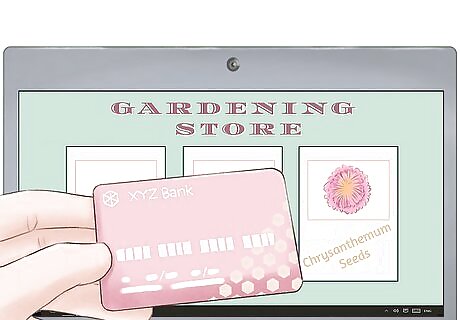
Purchase seeds from a nursery or gardening store. There's a wide variety of chrysanthemum seeds to choose from, and most cost between $2 and $10 for a pack. The pack should contain anywhere from 50 to 1,000 seeds.
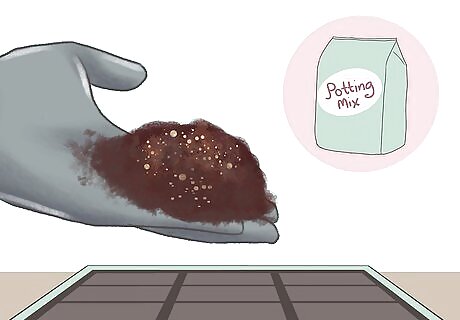
Fill seed germination trays with a well-draining potting mix. You can purchase potting soil at a gardening store, or you can make your own. Fill each cell of a seed germination tray almost to the top with the soil. You can purchase well-draining soil and seed germination trays at a gardening or home improvement store. To tell if the soil in your yard has proper drainage, dig a hole that's roughly 12 inches (30 cm) deep and fill it with water. If the water drains from the hole by the time 10 minutes have gone by, the soil is well-draining.
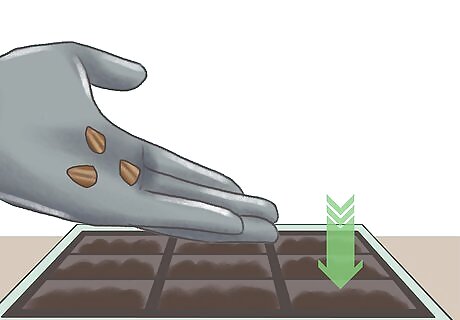
Place 2-3 seeds into each cell of the germination tray. It’s easiest if you simply pour the seeds into the palm of your hand and use your fingers to gently place the seeds into the soil. Instead of clumping them all together, spread the seeds out so that they're not touching.
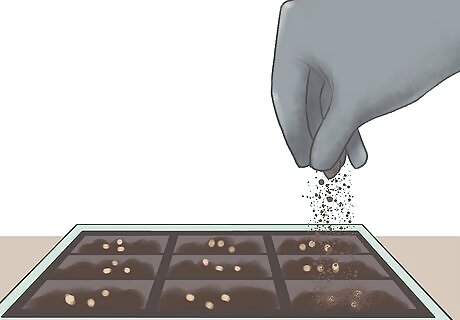
Sprinkle a fine layer of soil over the seeds. If you’ve placed the seeds into the soil, you don’t need to sprinkle more soil on top. However, if you simply dropped the seeds onto the soil, it’s best if you sprinkle a fine layer of additional soil into each cell to make sure the seeds are covered.
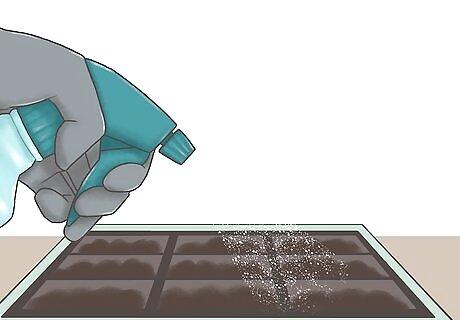
Use a spray bottle to produce a fine mist over the soil. Fill a small spray bottle with water and spray the tray so that the soil is nice and moist. When you touch the soil, it should be damp but not completely saturated.
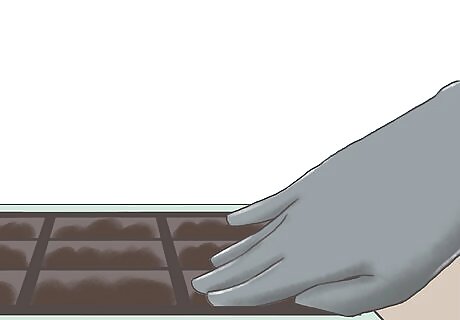
Press the soil down lightly with your fingers. This will help make sure the seeds have made contact with the soil and aren’t just sitting on top where they can be moved by wind or water. Use 2 or 3 fingers to gently flatten the soil with the bottom of your fingers, not the tips.
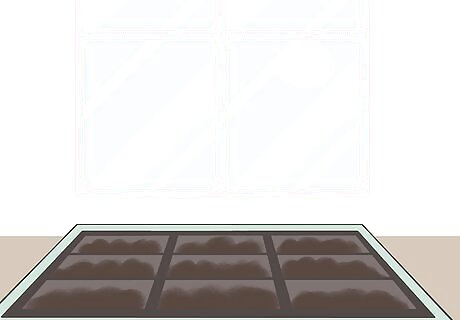
Place the seed tray in a bright, sunny spot. This could be in a windowsill that receives lots of sunlight or outside on a porch (if you’re able to monitor the weather closely). The more sunlight the seeds receive, the faster and better they’ll germinate. If you’d like, you can place a heating mat under the tray to warm the soil for faster germination. You should start seeing results in 8-10 days. Monitoring the weather if you leave the seeds out on a porch is important in case it happens to rain a lot, gets cold, or isn't sunny outside for several days.
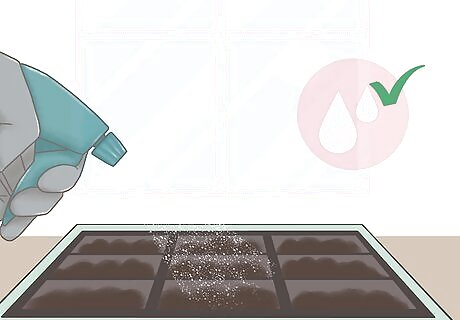
Check the soil often to ensure it’s moist. Use a spray bottle to apply a fine mist to the soil if it feels like it’s drying out. When the seeds are in sunlight, you should be checking them every day to make sure the soil is damp. Be careful not to oversaturate the soil — it should be moist, not dripping wet. Check the soil more often if you’re using a heat mat.
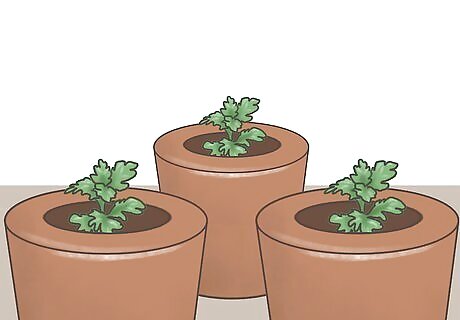
Transfer the seeds into separate pots when they’re a few inches high. When the stems grow to roughly 3 inches (7.6 cm), you can move them to separate pots so that their roots have more room to grow. Be very careful when transferring them so as not to damage their delicate roots or stems. It should be time to transfer them after about 6 weeks. Use a small spade or shovel to help remove the plants carefully.
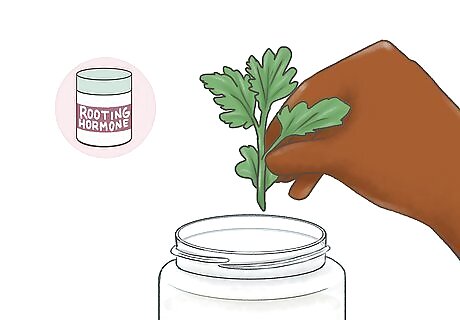
Propagate chrysanthemums if you wish to use a cutting. Take a cutting from a chrysanthemum and dip it in rooting hormone mix before planting. This often produces more stable chrysanthemums than growing them from seeds.
Transferring Potted Chrysanthemums

Plant the chrysanthemums after the danger of frost is over. Transferring your chrysanthemums from a pot into the ground can be a delicate process, so make sure the soil is nice and toiled and there’s no danger of cold weather that might damage the plant.
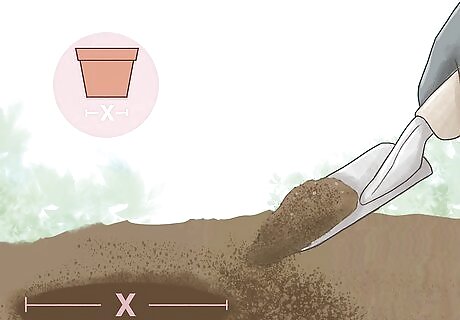
Dig a hole that’s twice the size of the roots of the plant. Use a shovel to create a hole for the plant that’s the same depth as the pot but twice as wide. This will ensure the chrysanthemums have plenty of room for their roots. Place the chrysanthemum carefully into the hole.

Space the chrysanthemums 18–24 inches (46–61 cm) apart, if applicable. If you’re planting several different sections of mums, place them 18–24 inches (46–61 cm) apart so that the roots have space to grow and spread without overcrowding each other.
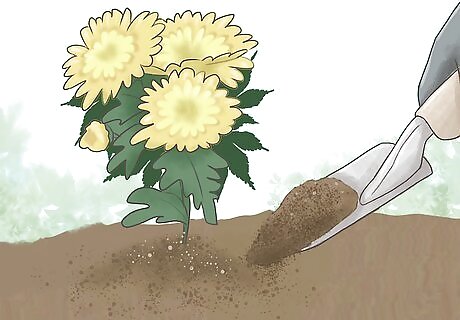
Cover the roots and empty spaces with fresh soil. There will be space around the roots after you’ve placed them, so pour soil into these spaces so that the roots are nicely surrounded. Use your hands to pack down the soil a bit so that it’s even with the rest of the ground. Spread a fresh top layer of soil over the roots as well, not just on the sides.
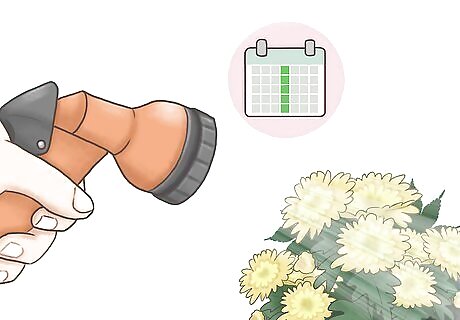
Water the chrysanthemums at least once a week. Test the soil with your finger to see if it’s dry, and if it is, give the plants a nice watering. They don’t like wet roots so allow them time to dry out between watering.

Feed the mums liquid fertilizer every 4-6 weeks, if desired. This isn’t required, but it will help keep the chrysanthemums healthy and growing quickly. You can find a liquid fertilizer at your local gardening or home improvement store. Follow the instructions that come with the liquid fertilizer to know how much and how often to feed the plants.


















Comments
0 comment